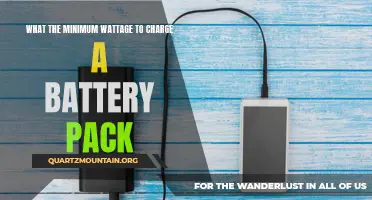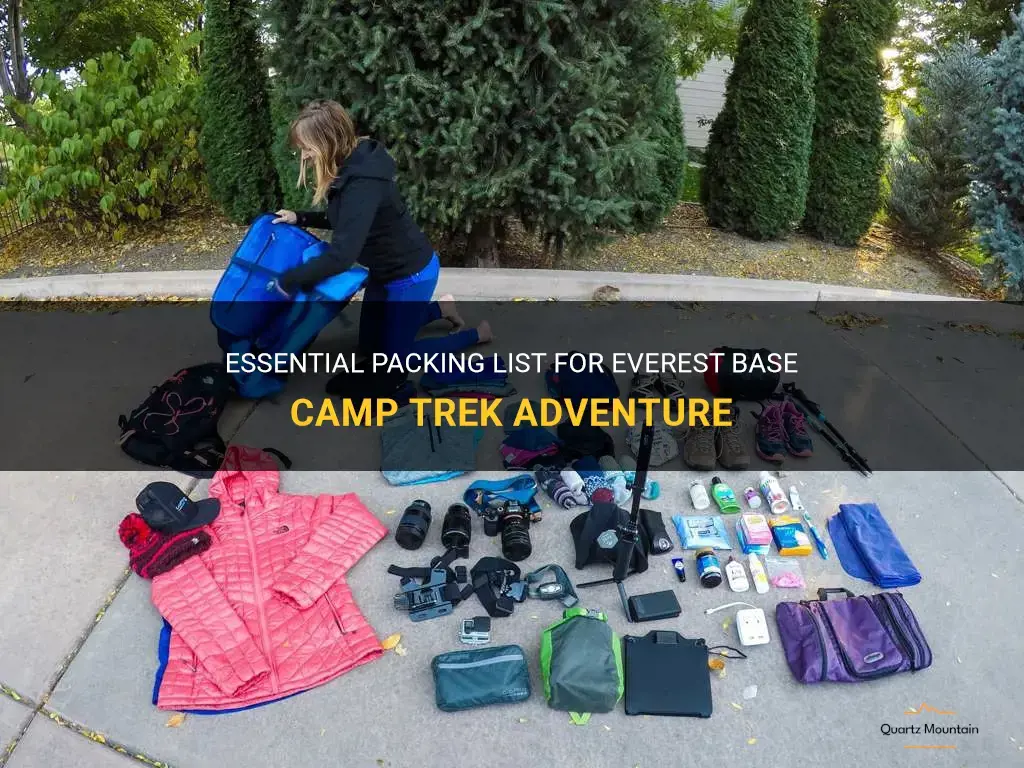
Planning a journey to the Everest Base Camp? You couldn't have chosen a more exhilarating adventure! As you gear up for the epic trek, it's crucial to have an essential packing list to ensure a safe and enjoyable experience. From sturdy hiking boots to high-altitude gear, this comprehensive guide will equip you with everything you need to conquer the highest mountain on Earth. So let's dive in and discover the must-have items for your Everest Base Camp Trek adventure!
| Characteristics | Values |
|---|---|
| Location | Nepal, Khumbu region |
| Trek Duration | 12-16 days |
| Difficulty Level | Moderate to Challenging |
| Maximum Altitude | 5,364 meters (Everest Base Camp) |
| Starting Point | Lukla (2,860 meters) |
| Permits Required | Sagarmatha National Park Permit, TIMS Card |
| Accommodation Options | Teahouses, Lodges |
| Temperature | Daytime: 10-15°C, Nighttime: -10 to -20°C |
| Clothing | Layered clothing, warm jackets, thermals |
| Footwear | Sturdy and comfortable hiking boots |
| Sleeping Bag | 4-season or down sleeping bag |
| Backpack | 30-40 liters capacity |
| Personal Medications | Acetazolamide (for altitude sickness) |
| Water Purification | Water purification tablets or filter |
| Snacks and Energy Bars | High-energy snacks and protein bars |
| Trekking Poles | Recommended for stability and balance |
| First Aid Kit | Basic first aid supplies and medicines |
| Camera | To capture the scenic views |
| Portable Charger | To charge electronic devices on the trek |
| Travel Insurance | Comprehensive coverage for trekking activities |
| Cash | Nepalese Rupees for buying snacks and drinks |
What You'll Learn
- What are the essential items to pack for the Everest Base Camp trek?
- Are there any specific clothing or gear recommendations for the trek?
- How should I pack my belongings to ensure safety and convenience during the trek?
- Are there any specific medications or first aid supplies that I should include in my packing list?
- Are there any items that I should avoid packing for the Everest Base Camp trek?

What are the essential items to pack for the Everest Base Camp trek?
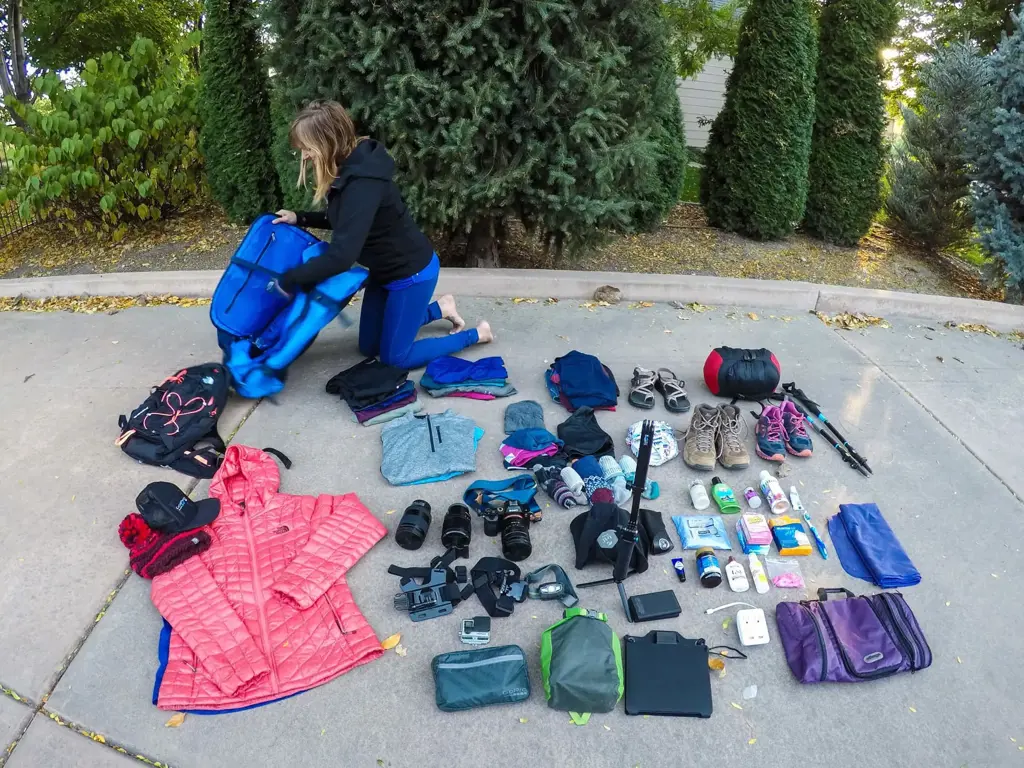
The Everest Base Camp trek is a challenging adventure that requires careful planning and preparation. As you embark on this incredible journey, it is vital to pack the necessary items to ensure your safety and comfort. Here are the essential items you should include in your backpack for the Everest Base Camp trek:
Clothing:
- Base layers: Bring thermal tops and bottoms to keep you warm during cold weather.
- Insulated jacket: A warm and lightweight jacket is crucial for the cold temperatures you will encounter on the trek.
- Waterproof and windproof jacket: Protect yourself from rain, snow, and wind with a waterproof and windproof jacket.
- Trekking pants: Choose comfortable and quick-drying pants that provide freedom of movement.
- Fleece jacket: Layering is key, and a fleece jacket will provide additional warmth.
- Gloves, hats, and scarves: Protect your extremities from the cold with insulated gloves, hats, and scarves.
Footwear:
- Hiking boots: Invest in good-quality, sturdy hiking boots that will provide stability and protection for your feet.
- Socks: Bring several pairs of thick, moisture-wicking socks to keep your feet warm and dry.
- Gaiters: These will protect your boots and lower legs from snow, scree, and debris.
- Sandals or flip-flops: Useful for resting your feet and giving them a break from your hiking boots.
Equipment:
- Backpack: Choose a comfortable and durable backpack with a large capacity to carry your essentials.
- Sleeping bag: Invest in a warm and lightweight sleeping bag that is suitable for sub-zero temperatures.
- Trekking poles: These will provide stability and help distribute the weight of your backpack.
- Headlamp or flashlight: Essential for navigating in the dark or during a power outage.
- Water bottle: Hydration is crucial, so bring a reusable water bottle to fill up along the way.
Other Essentials:
- First aid kit: Include essential supplies like bandages, antiseptic ointment, pain relievers, and altitude sickness medication.
- Sunglasses and sunscreen: Protect your eyes and skin from the strong UV rays at high altitudes.
- Toiletries: Pack small-sized toiletries, such as toothpaste, toothbrush, hand sanitizer, and wet wipes.
- Quick-drying towel: Lightweight and compact towels are ideal for drying off after a shower or washing.
- Snacks: Bring energy bars, trail mix, and other high-energy snacks to keep you fueled during long trekking days.
It is crucial to prioritize lightweight and functional items as you pack for the Everest Base Camp trek. Remember to pack according to the weather conditions and the specific season you plan to undertake the trek. Packing smartly will ensure that you are well-prepared for the challenges that lie ahead and will help make your Everest Base Camp trek a memorable and enjoyable experience.
A Complete Guide: What to Pack as an Au Pair in America
You may want to see also

Are there any specific clothing or gear recommendations for the trek?
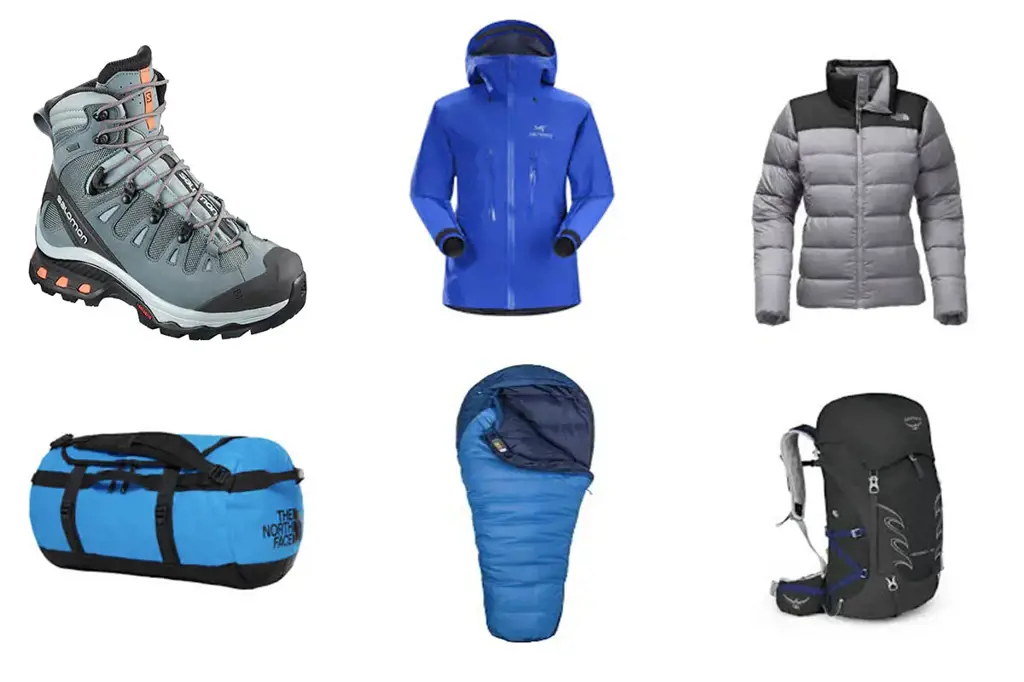
When embarking on a trek, it is essential to have the right clothing and gear to ensure a safe and comfortable journey. Whether you are planning a short day hike or a multi-day expedition, the following recommendations will help you prepare for any terrain and weather conditions.
- Layered Clothing: Dressing in layers is essential for trekking. Start with a moisture-wicking base layer that will keep you dry by wicking away sweat from your skin. Synthetic or merino wool materials work best for this purpose. Add a mid-layer for insulation, such as a fleece or down jacket, which will help retain body heat. Finally, top it off with a waterproof and breathable outer layer to protect you from rain, wind, and snow.
- Hiking Boots: Invest in a good pair of hiking boots that provide ankle support and have a sturdy sole for traction. Make sure you break them in before your trek to avoid blisters and discomfort. Choose boots that are waterproof or consider wearing gaiters to keep water from seeping in.
- Trekking Poles: Trekking poles can greatly aid balance and stability, especially on uneven terrain or steep slopes. They also reduce the strain on your knees and help distribute the weight of your backpack. Look for adjustable poles made from lightweight and durable materials.
- Backpack: A well-fitting backpack is crucial for carrying all your essentials. Look for a backpack with padded shoulder and hip straps for added comfort. It should have enough capacity to hold your clothing, food, water, and other gear. Consider a backpack with compartments for easy organization.
- Navigation Tools: Carry a map and compass, even if you are relying on a GPS or smartphone. Electronics can fail, and a backup plan is always wise. Learn how to use a compass and practice reading topographic maps before your trek.
- Water and Food: Stay hydrated by carrying enough water for the duration of your trek. Consider using a hydration bladder or water bottles that are easy to access. Pack energy-rich snacks and a packed lunch for longer treks. Make sure to pack enough food for emergency situations as well.
- Headlamp: A lightweight and compact headlamp is a must-have item for any trek. It will ensure you have hands-free illumination during early morning starts, late-night hikes, or in case of emergencies.
- First Aid Kit: Carry a basic first aid kit that includes essentials like bandages, antiseptic wipes, pain relievers, and blister treatment. Customize it according to your specific needs and any medical conditions you may have.
- Clothing Accessories: Don't forget to pack a hat to protect your head from the sun, a buff or scarf to protect your neck and face, and gloves or mittens to keep your hands warm. Sunglasses with UV protection are also essential, especially if you are trekking in snowy conditions.
- Personal Items: Bring essentials like sunscreen, insect repellent, toilet paper, hand sanitizer, and a multi-tool with a knife. Also, pack extra batteries for your electronics and a power bank to recharge them if needed.
Remember to check the weather conditions and local regulations before your trek to ensure you have all the necessary clothing and gear. Being well-prepared will not only enhance your trekking experience but also contribute to your safety and well-being on the trail.
Cruising the USA: Essential Items to Pack for a Memorable CMS Cruise
You may want to see also

How should I pack my belongings to ensure safety and convenience during the trek?
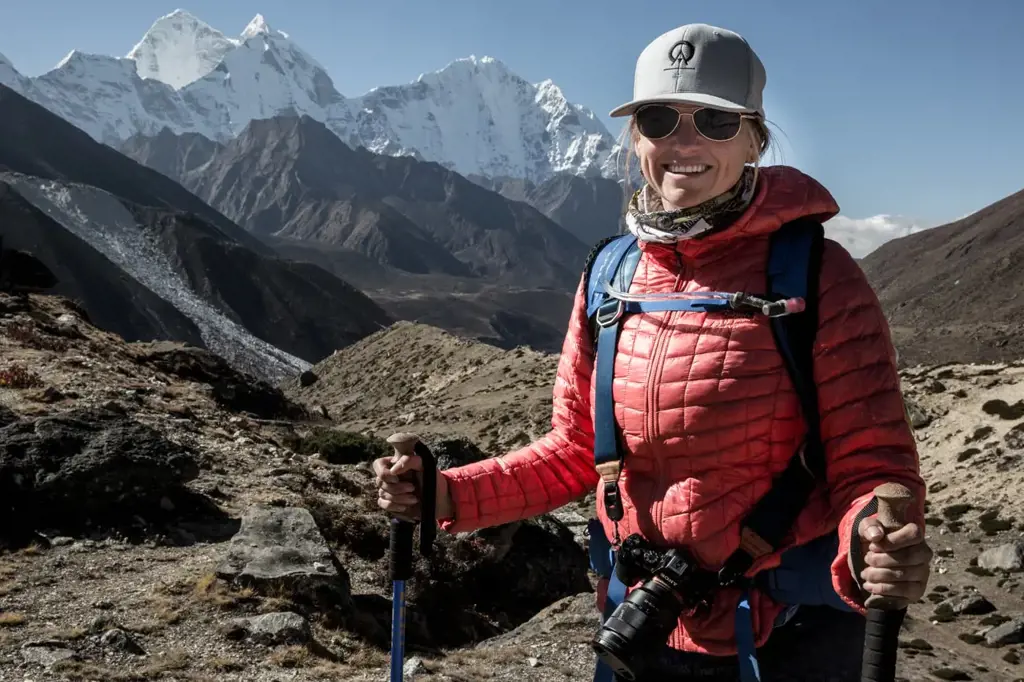
When embarking on a trek, it's crucial to pack your belongings in a way that ensures both safety and convenience. A well-packed backpack can make a significant difference in your overall trekking experience. Here are some essential tips on how to pack your belongings for a safe and convenient trek.
Make a checklist:
Create a detailed checklist of all the essential items you'll need during the trek. This will help you stay organized and prevent you from forgetting any essential gear. Some items to include on your checklist are a tent, sleeping bag, cooking equipment, food, water, clothing, first aid kit, navigation tools (such as a compass or GPS), and personal items like sunglasses, sunscreen, and insect repellent.
Use dry bags:
Invest in a set of high-quality dry bags or waterproof stuff sacks to protect your gear from moisture. Pack your clothes, sleeping bag, and any electronics in these dry bags to prevent them from getting wet in case of rain or accidental water exposure. Additionally, using different colored dry bags can help you quickly locate specific items when needed.
Organize your backpack:
Keep your backpack well-organized by packing heavy items closer to your back and lighter items towards the top. This distribution of weight will help maintain a better balance and stability while trekking. Place frequently used items, such as snacks or a rain jacket, in easily accessible pockets or the top compartment of your backpack.
Utilize packing cubes:
Consider using packing cubes to further organize your clothes and belongings within your backpack. These lightweight and zippered compartments can help you compress your clothes, separate clean and dirty items, and easily locate what you need without having to rummage through your entire backpack.
Keep safety in mind:
While packing for a trek, it's essential to prioritize safety. Pack a well-stocked first aid kit with essential items like adhesive bandages, wound disinfectant, pain relievers, and any necessary prescription medications. Additionally, include a compass, map, whistle, and a multi-purpose tool like a Swiss army knife. These safety essentials can be invaluable in case of emergencies.
Pack smart for convenience:
Consider the convenience factor when packing. Avoid overpacking by thinking critically about the items you'll actually need. Choose lightweight and compact gear whenever possible. Opt for quick-drying clothes that can be easily washed or dried on the go. Minimize redundancy by packing versatile items that can serve multiple purposes.
Distribute weight evenly:
Ensure an even distribution of weight in your backpack, which will help reduce strain on your back and shoulders. Heavy items should be positioned lower and centered, while lighter items can be placed higher. Strive for a balanced load that won't throw off your stability and posture.
Test pack before the trek:
Before setting off on your trek, do a test pack to ensure everything fits comfortably in your backpack. This will give you an opportunity to eliminate any unnecessary items or make adjustments if needed. It's also a good idea to take a short hike with your fully packed backpack to test its weight distribution and comfort.
By following these packing tips, you'll be well-prepared to embark on your trek with safety and convenience in mind. Remember to periodically reassess your packing list to account for changing weather conditions, terrain, or personal needs. With the right approach to packing, you can focus on enjoying the beauty of the outdoors without being weighed down by unnecessary gear.
Packing for Aruba: Must-Haves for a Tropical Paradise Vacation
You may want to see also

Are there any specific medications or first aid supplies that I should include in my packing list?
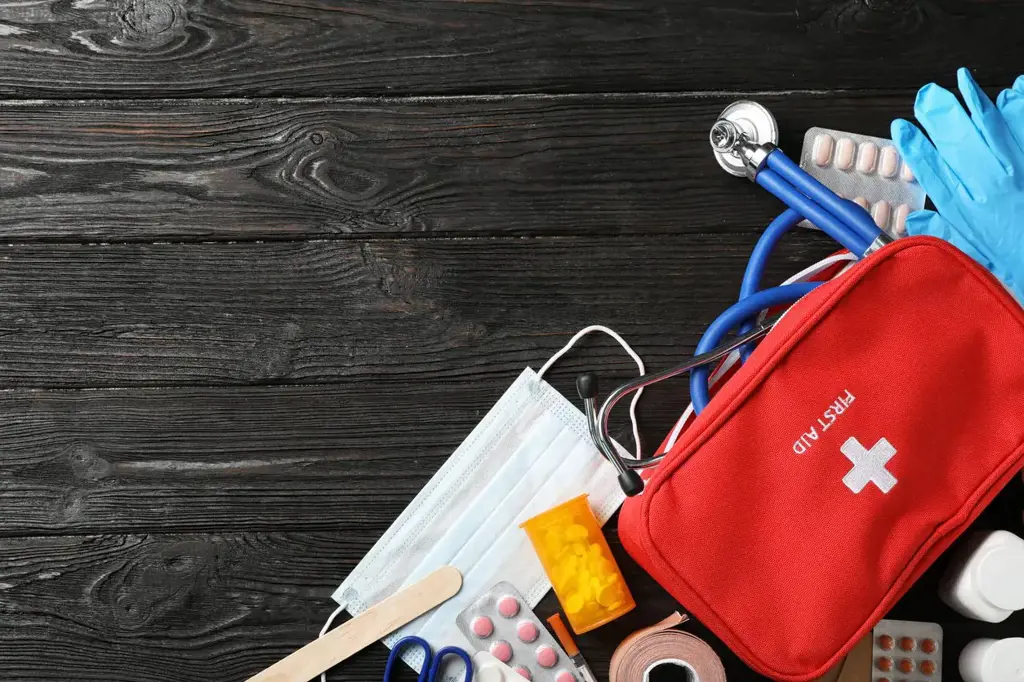
When preparing for a trip, it's important to include necessary medications and first aid supplies in your packing list. These items can help you in case of any unexpected health issues or emergencies that may arise during your travels. Here are some specific medications and first aid supplies that you should consider including:
- Pain relievers: Pain relievers such as acetaminophen or ibuprofen can come in handy for headaches, muscle aches, or general discomfort. These medications are widely available and can be easily purchased over the counter.
- Antihistamines: Antihistamines can be used to treat allergies, insect bites, or minor allergic reactions. They can also help with symptoms like itching, redness, or swelling. Make sure to choose a non-drowsy version if you need to stay alert during your trip.
- Motion sickness medication: If you're prone to motion sickness, including a medication to prevent or alleviate it can be helpful, especially if you're planning to travel by car, boat, or plane.
- Upset stomach remedies: Consider packing medications such as antacids or anti-diarrheal tablets for digestive issues. These can be useful in case you encounter new or spicy foods that your stomach might not be accustomed to.
- Prescription medications: If you take prescription medications on a regular basis, make sure to pack an adequate supply for the duration of your trip. It's also a good idea to carry a copy of your prescription, as well as a letter from your doctor explaining the need for these medications, in case you're questioned by customs or immigration officials.
- Band-aids and antiseptic ointment: These basic first aid supplies can help with small cuts, scrapes, or blisters. They can prevent infections and promote faster healing. It's a good idea to carry different sizes of band-aids to accommodate various types of wounds.
- Tweezers and scissors: These tools can be useful for removing splinters, cutting tape or bandages, or dealing with any other small tasks that may require precision.
- Sunscreen and insect repellent: Depending on your destination, you may need to protect yourself from the sun or insects. Choose a sunscreen with a high SPF and broad-spectrum protection, and an insect repellent that is effective against mosquitoes or other pests in the area.
- Rehydration salts: If you're traveling to a region with a higher risk of diarrhea or vomiting, consider including oral rehydration salts in your first aid kit. These salts contain a balanced mixture of electrolytes that can help prevent dehydration.
- Prescription glasses or contact lenses: If you wear prescription glasses or contact lenses, make sure to bring an extra pair in case of damage or loss. It's also a good idea to include contact lens solution and a contact lens case in your packing list.
Remember to check the expiration dates on all medications and replace any that have expired. Additionally, familiarize yourself with the healthcare resources available at your destination, such as nearby hospitals or clinics. Being prepared and having the necessary medications and first aid supplies can give you peace of mind and help ensure a smooth and safe trip.
Essential Items to Pack for Your Tulum Vacation
You may want to see also

Are there any items that I should avoid packing for the Everest Base Camp trek?
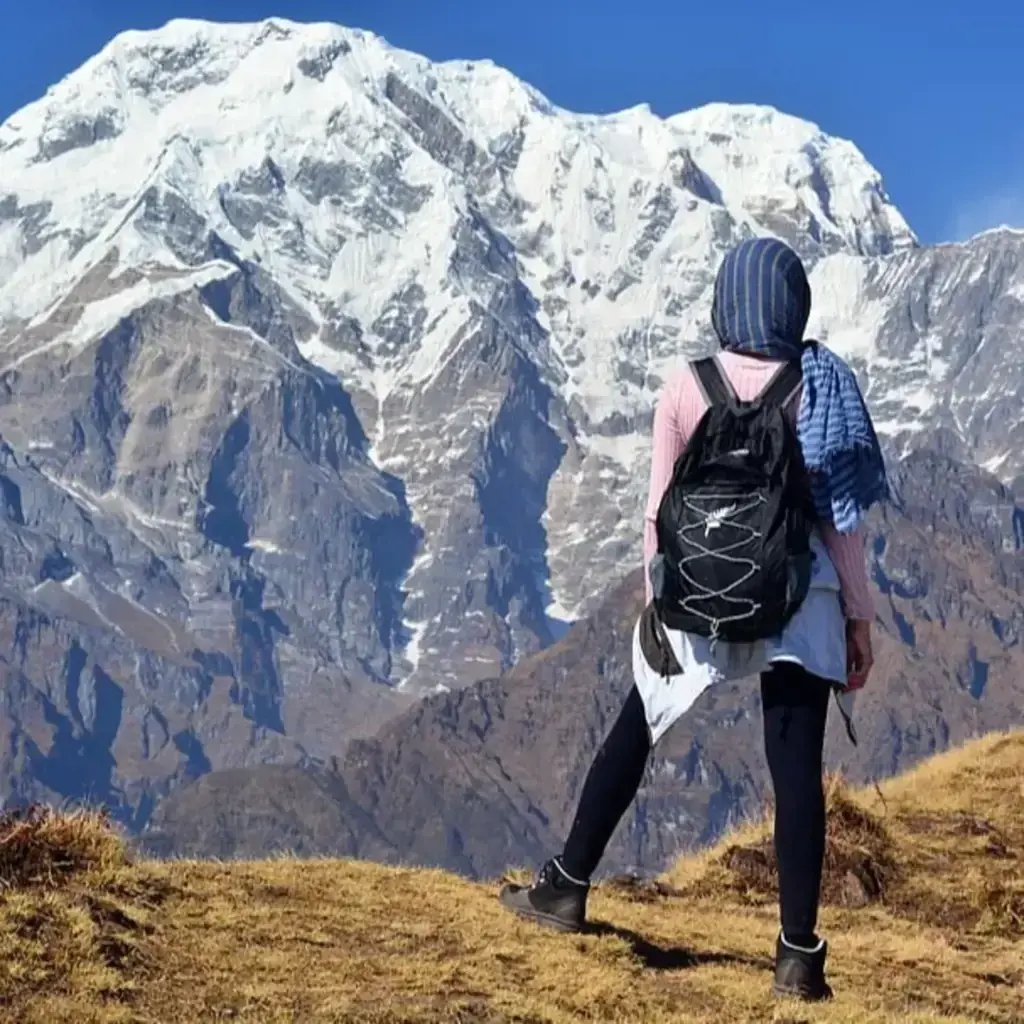
When preparing for a trek to Everest Base Camp, it is important to pack wisely and efficiently. Due to the challenging terrain and limited resources along the route, it is important to avoid packing unnecessary items that will only add weight to your backpack. Here are some items that you should avoid packing for the Everest Base Camp trek:
- Heavy winter gear: While it is true that the temperatures can drop significantly at higher altitudes, it is not necessary to pack heavy winter gear for the Everest Base Camp trek. Layering lightweight clothing is the key to staying warm in the mountains. A good quality base layer, a fleece or down jacket, and a windproof and waterproof outer layer should be sufficient. It is also important to pack a warm hat, gloves, and a good pair of insulated hiking socks.
- Excessive toiletries: It is important to maintain personal hygiene during the trek, but it is not necessary to pack excessive toiletries. Basic items such as a toothbrush, toothpaste, and toilet paper should suffice. Many teahouses along the route provide hot water for showering, so a small bottle of biodegradable soap can come in handy. Dry shampoo can also be a good alternative to save space and weight.
- Entertainment gadgets: While it can be tempting to bring along gadgets such as tablets, laptops, or e-readers for entertainment, it is best to avoid packing them. The priority during the Everest Base Camp trek should be on the experience of the mountains and the camaraderie with fellow trekkers. Instead, consider packing a lightweight book or a deck of cards for entertainment during rest days.
- Bulky sleeping bag: A good quality sleeping bag is essential for the Everest Base Camp trek, but it is important to choose one that is lightweight and compact. Bulky sleeping bags can take up valuable space and add unnecessary weight to your backpack. Look for a sleeping bag that is rated for temperatures well below freezing and packs down to a small size. This will ensure that you stay warm and comfortable at night without sacrificing space in your backpack.
- Non-essential luxury items: It is important to remember that the Everest Base Camp trek is a physically challenging and demanding journey. It is best to avoid packing non-essential luxury items that will only add unnecessary weight and take up space in your backpack. Items such as hairdryers, makeup, and fancy accessories should be left behind. Focus on packing lightweight and functional items that will serve you well during the trek.
In conclusion, when preparing for the Everest Base Camp trek, it is important to pack wisely and avoid unnecessary items that will only add weight to your backpack. By packing lightweight and functional items, you can ensure that your trek is comfortable and enjoyable. Remember to prioritize essential items such as proper clothing, adequate toiletries, and a lightweight sleeping bag. Leave behind non-essential luxury items and gadgets to fully immerse yourself in the unique experience of the Everest Base Camp trek.
The Ultimate Guide for Packing Essentials for Sleepaway Camp
You may want to see also
Frequently asked questions
When packing for the Everest Base Camp trek, it's important to pack lightweight, breathable clothing that can be layered for changing weather conditions. Some essential items to pack include a good quality, waterproof backpack, sturdy and comfortable hiking boots, warm socks, thermal layers, a down jacket, a hat, gloves, sunglasses, a sleeping bag, a headlamp, a water bottle, a first aid kit, toiletries, and high-energy snacks. Don't forget to pack sunscreen, as the sun's rays can be particularly intense at high altitudes.
Dressing appropriately for the Everest Base Camp trek is crucial for your comfort and safety. It's important to dress in layers so that you can adjust your clothing to accommodate changing temperatures. Start with a lightweight, breathable base layer such as a moisture-wicking shirt and pants. Layer on top with a fleece or down jacket for insulation, and finish with a waterproof and windproof outer shell. Choose comfortable, moisture-wicking socks and boots that provide good support. Don't forget to pack a hat, gloves, and sunglasses to protect yourself from the sun and cold.
Yes, there are some specific gear recommendations for the Everest Base Camp trek. It's important to invest in good quality, waterproof gear to protect yourself from the cold and wet conditions. A sturdy and comfortable backpack is essential for carrying your belongings, and it's recommended to pack a lightweight, 4-season tent if you plan on camping along the trek. Trekking poles can also be helpful for stability and reducing strain on your knees. Additionally, consider bringing a portable charger for electronic devices, a water purification system, and a portable oxygen canister for altitude sickness prevention.




